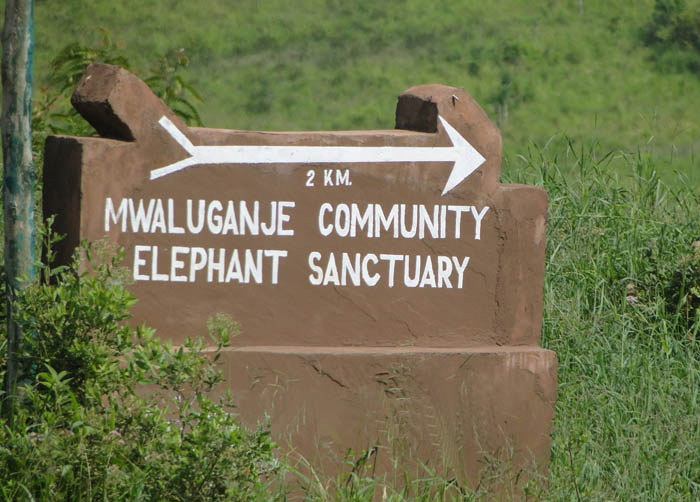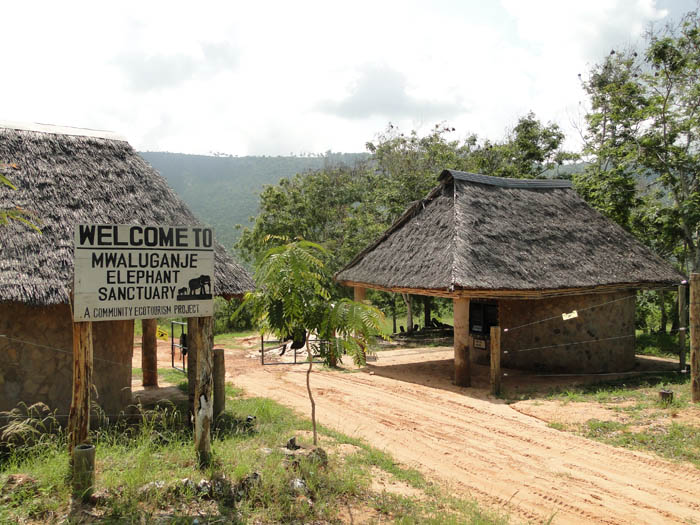THE SANCTUARY
 As reports of human-elephant conflicts intensified, the need to resolve the conflict in the Mwaluganje area became paramount. Kenya Wildlife Service presented a detailed conservation proposal that would resolve the human-elephant conflict in the area by establishing a migratory corridor between Shimba Hills National Reserve (19,251 hectares) and Mwaluganje Forest Reserve (1,414.7 hectares). The proposal relied upon the surrender of community land within the proposed Sanctuary border, and was tabled before the Kwale District Commissioner in 1990. The proposal was deferred as funds were not available to compensate the landowners.
As reports of human-elephant conflicts intensified, the need to resolve the conflict in the Mwaluganje area became paramount. Kenya Wildlife Service presented a detailed conservation proposal that would resolve the human-elephant conflict in the area by establishing a migratory corridor between Shimba Hills National Reserve (19,251 hectares) and Mwaluganje Forest Reserve (1,414.7 hectares). The proposal relied upon the surrender of community land within the proposed Sanctuary border, and was tabled before the Kwale District Commissioner in 1990. The proposal was deferred as funds were not available to compensate the landowners.
 Until recently, the land in the Sanctuary was occupied by local people who farmed and hunted there, despite the area being unsuitable for any meaningful crop production. The soils in the area are generally very poor sandy soils, however new landowners deforested the area to pave way for crop farming. This ultimately led to serious soil erosion on the steep slopes, and it was discovered that this method of farming was not only unsustainable, but harmful to the environment. This project could offer the farmers a new outlook.
Until recently, the land in the Sanctuary was occupied by local people who farmed and hunted there, despite the area being unsuitable for any meaningful crop production. The soils in the area are generally very poor sandy soils, however new landowners deforested the area to pave way for crop farming. This ultimately led to serious soil erosion on the steep slopes, and it was discovered that this method of farming was not only unsustainable, but harmful to the environment. This project could offer the farmers a new outlook.

Kenya Wildlife Service pursued the proposal, gaining grassroots support through community education and mobilisation. A strategy of income generation through tourism was devised and efforts were made to reassure the cautious landowners that the land would remain theirs. By 1992, enough community members were convinced that the proposal was a positive and effective measure that would allow farmers to grow their crops on the land peacefully; however, they imposed the condition that the corridor be fenced with an effective elephant barrier.
Kenya Wildlife Service presented the proposal to the District Commissioner for the second time, and finally it was accepted as a viable option. By 1994, the landowners had registered a company who was appointed to run the Sanctuary, funds were raised, a solar powered fence erected partway around the Sanctuary and the homes within the Sanctuary boundary were relocated outside the Sanctuary perimeter. A migratory corridor for the elephants between Mwaluganje and Shimba Hills National Reserve was created, and over the next few years 300 families joined the project and voluntarily contributed their land to the Sanctuary, agreeing not to farm this significant elephant habitat.








